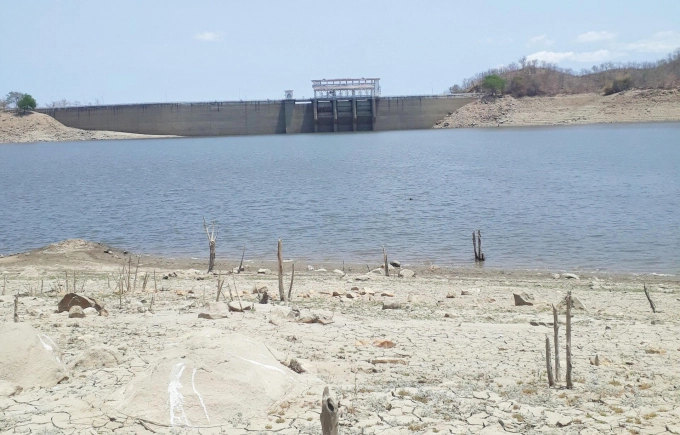Scientists say the average annual rainfall in Ninh Thuan is just 1,000 mm and rains are mostly seen in the last four months of the year (from September to December). Meanwhile, the volume of evaporated water is double that figure, which causes regular droughts.

The Ninh Thuan provincial authorities spend big money every year to deal with droughts and water shortage, by building reservoirs and irrigation systems, according to thiennhien.net.
Under the water resources development plan by 2020-2030, the surface water for Ninh Thuan will mostly rely on the Cai Phan Trang water system which covers nearly the whole province, except some coastal areas belonging to the districts of Thuan Bac, Ninh Hai and Ninh Phuoc, where there are rivers flowing straight into the sea.
According to Dang Kim Cuong, director of the Ninh Thuan Department of Agriculture and Rural Development, the total natural area of the Cai Phan Rang river system is 3,043 square kilometers and the total surface water volume in Ninh Thuan is 2,267 billion cubic meters a year, including 2,032 billion cubic meters from Cai river valley, 548 million cubic meters from Da Nhim Hydropower (Don Duong Reservoir), and 234 million cubic meters from the rivers and streams flowing from other provinces to Ninh Thuan.
| Ninh Thuan is the driest province in the country. Severe droughts have been affecting the locality over many years, causing serious damage to agricultural production. |
However, the total volume of surface water used every year is just 800 million cubic meters, while the remaining flows into the sea.
Meanwhile, underground water reserves are very poor, with low mineralization level. In the coastal plain area of Phan Rang, the water containing layer is thin and affected by salinity.
Since natural water sources cannot satisfy irrigation needs, building water supply works such as reservoirs, dams and pump stations is very important to ensure water security for the province.
There are 21 reservoirs throughout the province with the total capacity of 194.49 million cubic meters, 7 large dams and 10 pumping stations. There are also tens of small dams and hundreds of field pumping stations in charge of providing water to more than 600,000 people and serving business fields (industries, services and tourism), husbandry and agricultural production.
However, the total agricultural land which can be irrigated in Ninh Thuan is just 26,000 hectares, including 16,000 hectares of rice fields irrigated by Don Duong Hydropower Plant, and 10,000 hectares of rice and crops using water from 21 reservoirs, which account for 35 percent of total agricultural land of the province.
Ninh Thuan still suffers from the water shortage every year, and the situation has been extremely serious in the years when heavy droughts attack (2015, 2016 and 2020).
Thien Nhien

Mekong Delta needs VND5 trillion investment for freshwater supply projects
To ensure rural residents have access to fresh water in the 2021-2025 period, localities in the Mekong Delta will require an investment of VND5 trillion.

Hanoi likely not to see disrupted water supply this summer
Water plants in Hanoi were asked to implement measures to ensure supply for the city during summer when demand for water usually increases, said Deputy Director of the city’s Construction Department Hoang Cao Thang.